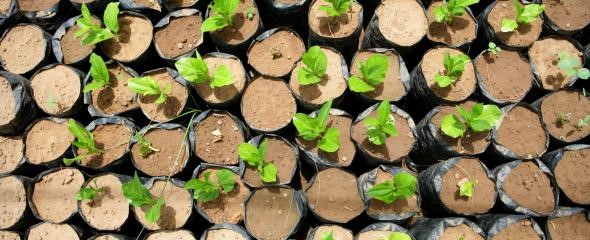
Share
Stimulating Private Sector Engagement in REDD+, SFM and Landscape Restoration
CHALLENGE
Investing in productive functions and use of forests through sustainable forest management (SFM), forest and landscape restoration, and afforestation and reforestation, could yield significant multiple wins of climate change mitigation, increased climate change resilience and adaptation, and green growth. Through the Stimulating Private Sector Engagement in REDD+, SFM and Landscape Restoration Activity, PROFOR is building evidence to support a broader approach to REDD+ that would incorporate the potential of productive functions of forests to mitigate climate change.
Current REDD+ approaches do not into take account the climate benefits that sustainable forests could provide outside of the forest sector, particularly in three key areas: substituting fossil fuels for renewable, forest-based energy sources; substituting fossil-fuel intensive construction materials; and creating a virtuous cycle of building the forest products carbon pool through durable, long-lived wood products combined with forest re-growth. Together, these areas could amount to as much as 20 percent of the global mitigation potential.
Such a radical expansion of the REDD+ approach would also address the unsatisfied need for timber, fiber and wood-based energy, which is a key driver of forest degradation and deforestation. Projections suggest that demand for fuelwood and charcoal will keep increasing beyond the year 2050 in order to meet the needs of around 2.5 billion people. At the same time, total demand for wood will grow faster than population growth, rising from a current 3.5 billion m3 to over 15 billion m3 per year.
APPROACH
The objective of this study is twofold: (i) To broaden the understanding of how including a landscape-based approach to forest, forest-based products supply chains, and downstream industries into a broadened REDD+ architecture could help mitigate climate change mitigation outcomes; and (ii) to develop a private sector engagement strategy for enhanced private sector investment in REDD+ sustainable forest value chain and landscape restoration efforts.
The study examines six countries in detail: Ethiopia, Columbia, Mexico, Mozambique, Peru and Vietnam.
RESULTS
All of the countries analyzed indicate that productive forests and harvested wood products (HWP) have a high potential for green growth, employment creation, and climate change mitigation. All countries are projected to have significant supply gaps of HWP, suggesting that there is substantial potential to mitigate climate change and spur economic growth by bolstering HWP value chains.
The study finds that substituting fossil-fuel-intensive materials with HWP provides the greatest mitigation benefit in all countries. Productive forests for HWP would be the second largest sequestration source in Mexico, Peru, and Colombia. In Vietnam, sawn wood production and productive forests for HWP are second most important. Ethiopia and Mozambique have much more potential to produce other industrial roundwood. Production of paper and paperboard offer a more limited mitigation potential due to the short life spans of these products.
Moreover, the study confirms that productive forests could help fill the expected gap in roundwood supply. For instance, the research projects project that Ethiopia’s demand for HWP will grow from 4.1 million m3 in 2013 to 16.7 million m3 in 2040. Increasing demand will result in a projected industrial roundwood supply gap of 13.3 million m3 in 2040, which could be addressed by establishing an additional 750,000 hectares of professionally managed productive forests.
Compared to other land use mitigation measures, HWP production offers an attractive opportunity to involve the private sector and catalyze investment in land use. A relatively small amount of public sector finance would be necessary used to stimulate large private sector investment, while also helping countries to achieve their Nationally Determined Contributions (NDC) objectives.
This study was complemented by an analytical paper on “Incentive Mechanisms towards Deforestation-Free, Forest-Smart Commodities.”
For stories and updates on related activities, follow us on twitter and facebook , or subscribe to our mailing list for regular updates.
Last Updated : 06-16-2024








